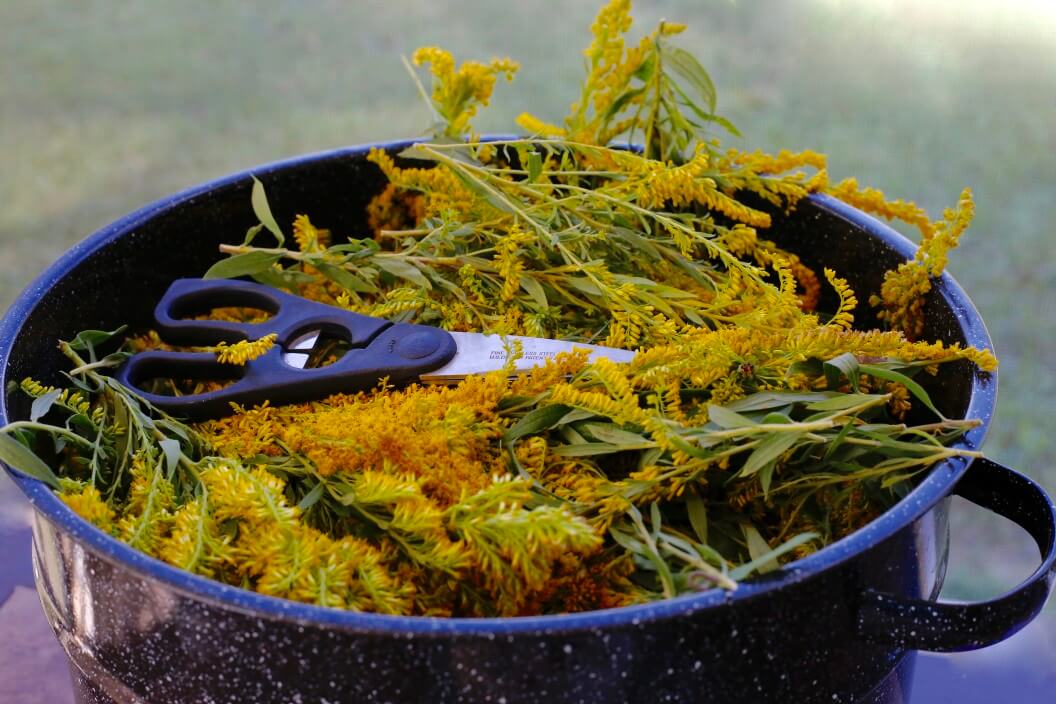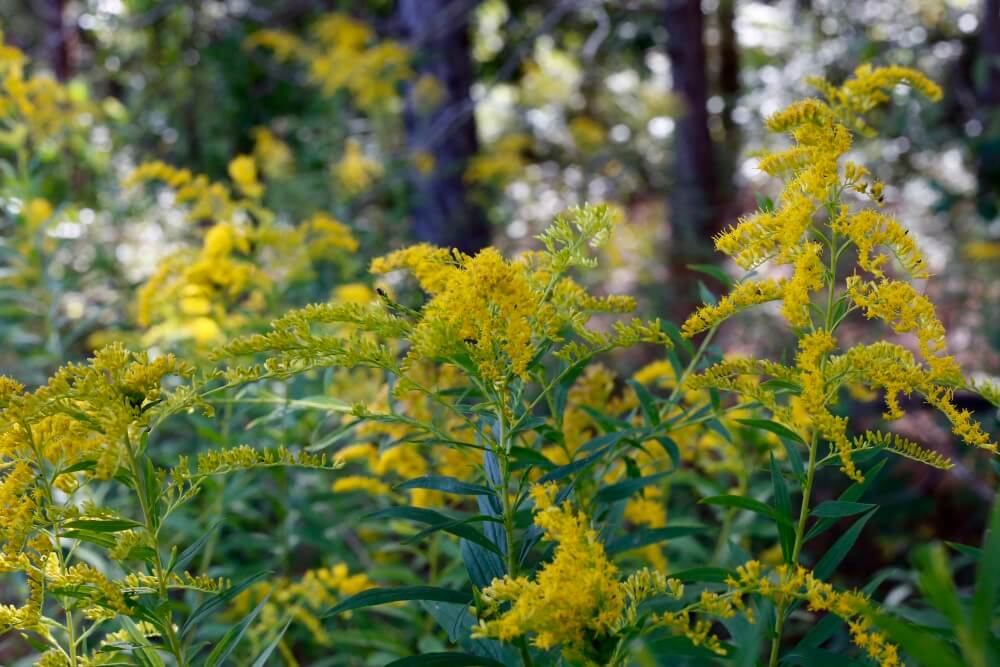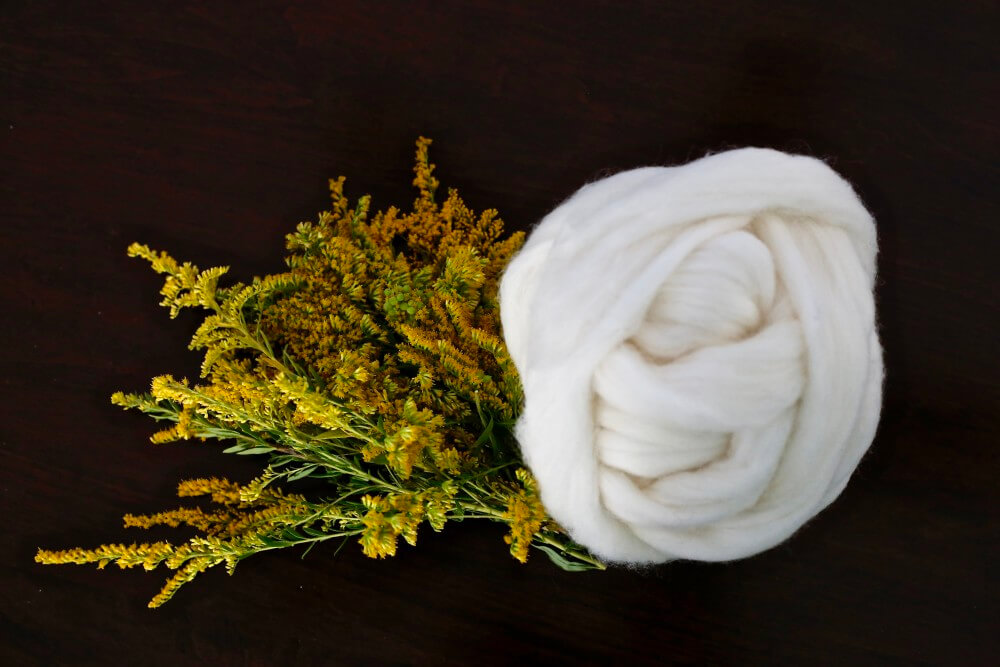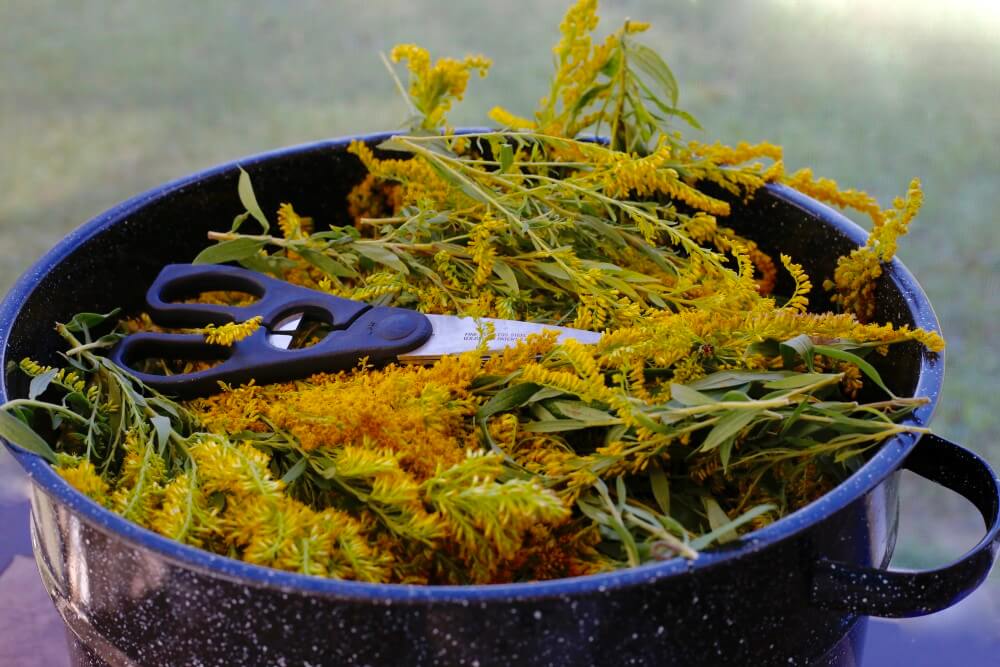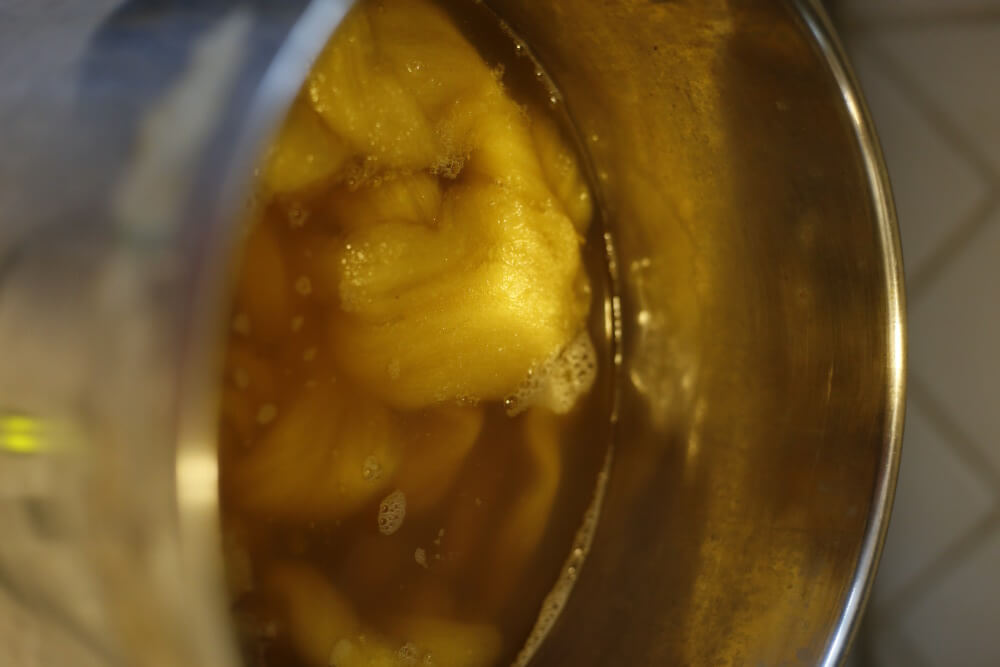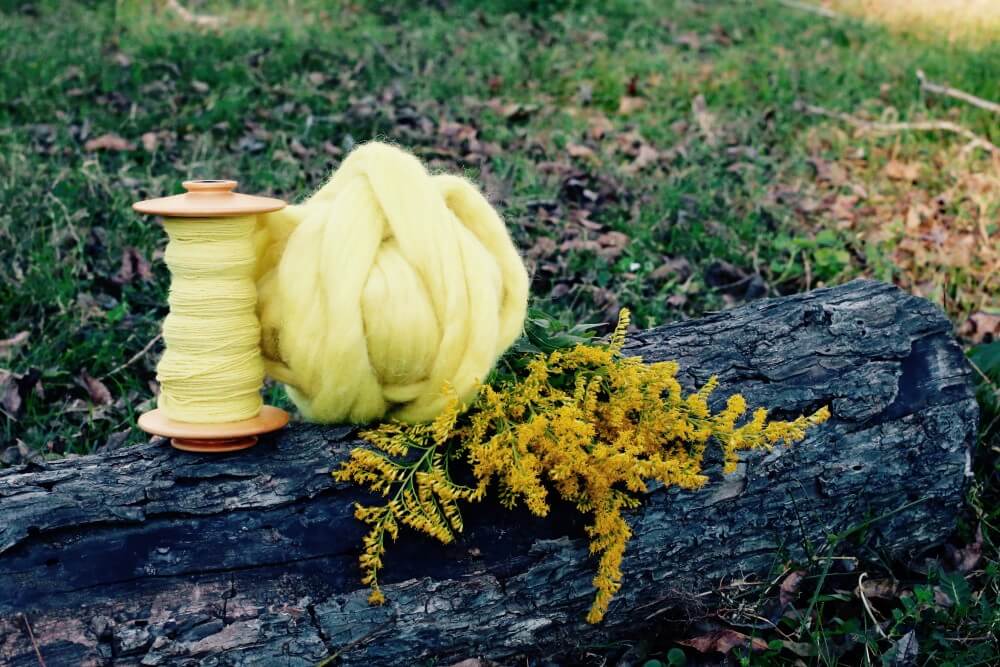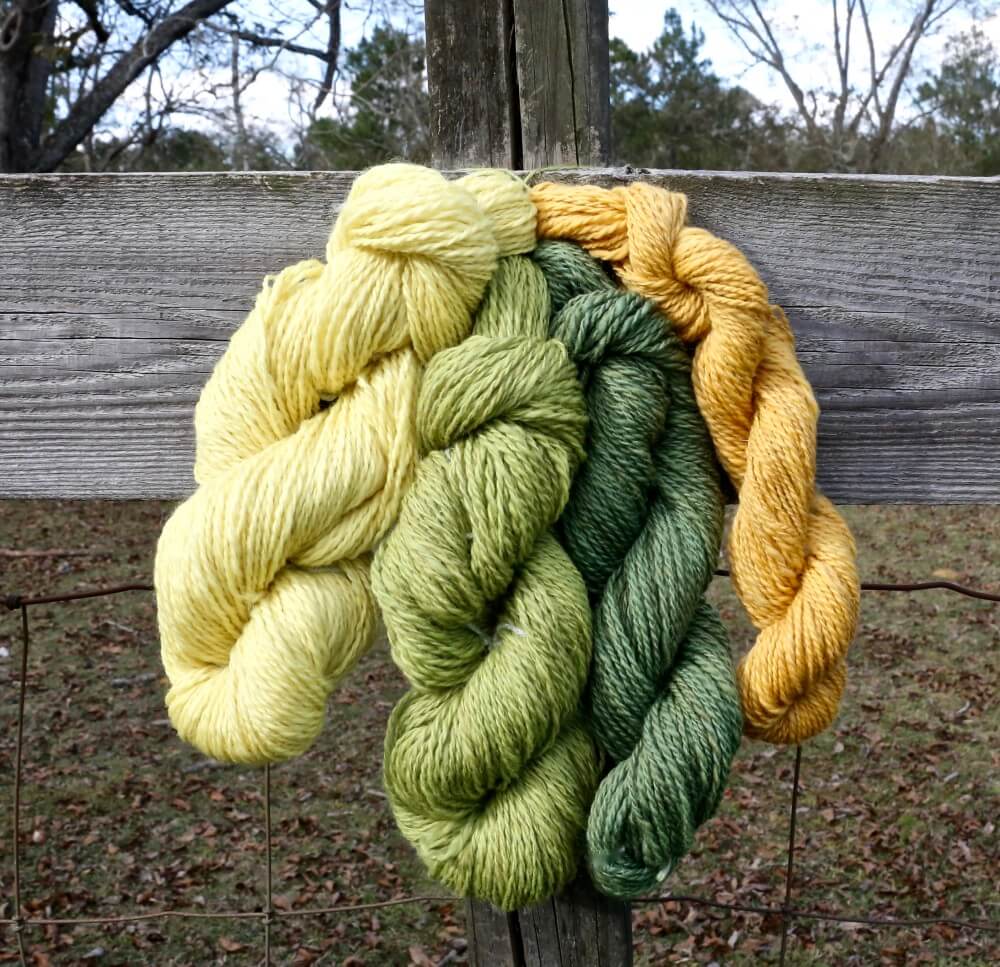Every year I look forward to Fall. The air is crisp and leaves rustle in the wind. It’s a season for pumpkins, pecans and Goldenrod. In our area the Goldenrod is quite prolific, and I feel compelled every year to make a big pot of dye using this pretty yellow weed.
This year I’m using Kromski Polish Merino in my dye pot.
I thought it might be fun to experiment with some of Kromski’s commercially dyed colors instead of the usual choice of Ecru. I will be using White Milled Rice, Spearmint, Yellow and Blue. The White Milled Rice is whiter than the natural color of Ecru, so my hope is to get a brighter yellow with it.
Mordanting:
Before the wool is ready to dye, it must be treated with what is called a mordant. This opens the fibers and prepares them to accept the dye, making it permanent. Although in the case of most all natural dyes, permanent refers to the ability to hold the color when being handled or washed. Nearly every natural dye will fade in sunlight over time, some faster than others. I have been fairly happy with my results using Alum and Cream of Tartar as a mordant for Goldenrod. The Cream of Tartar is not absolutely necessary, but it helps to brighten the color.
The wool can be pre-mordanted ahead of time or on the same day as the dyeing.
It is important to weigh your wool in order to calculate the amount of Alum to be used. Too much Alum and the wool becomes sticky. This stickiness will not wash out and the wool is ruined. As a basic recipe, for every one pound of wool, use 3 oz Alum and 1 oz Cream of Tartar. Dissolve the mordants in a large pot full of warm water (large enough for the wool to move freely). Place wet wool into the pot (pre soaking the wool helps it to take up the mordant evenly). Slowly bring the liquid to a simmer, gently stirring the wool on occasion. Polish Merino will felt so take care not to agitate. Simmer for 1 hour, remove from heat and allow it to cool. Then carefully remove the wool and squeeze out the excess water. You may now hang it to dry for later use, or head strait to the dye process.
To Dye:
Gather a full pot of yellow flowers. Some stems and leaves are fine, but avoid cutting too low on the plant, the main focus is the flower.
Fill the pot with enough water to cover the plants completely. Bring to a simmer and cook for about 1 hour. Let the pot cool before straining off the flowers.
Add the wool to the cooled pot of dye and once again bring it to a low simmer. Stir gently from time to time to ensure even coverage. Remember to use care not to felt the wool. When you are happy with the color, remove the wool and let it cool before handling. Alternately, allow it to cool in the pot for a deeper color.
Rinse under room temperature water. The best way to avoid felting is to fill the sink or pot with water and submerge the wool. Move the wool as little as possible to avoid felting. Gently remove the fiber and repeat the process until the water is clear.
Hang it out to dry thoroughly.
Now its time to sit down in front of your favorite Kromski Spinning Wheel and create some beautiful, naturally dyed yarn.
My colors from left to right: White Milled Rice, Spearmint, Yellow, and Blue; back row. After the dye process; front row.
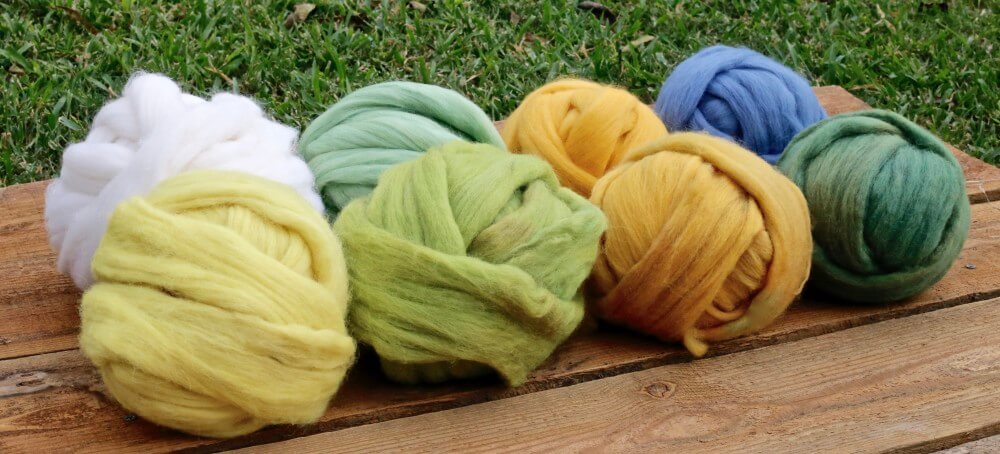 As you can see, it’s possible to get quite the range of hues when starting with colored roving, rather than a natural, non-dyed wool. Although, that’s fun too!
As you can see, it’s possible to get quite the range of hues when starting with colored roving, rather than a natural, non-dyed wool. Although, that’s fun too!
This yarn was spun on the Kromski Sonata. It really made some beautiful yarn! I can’t wait to start knitting.




